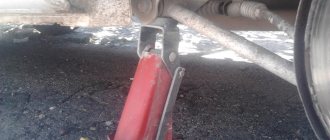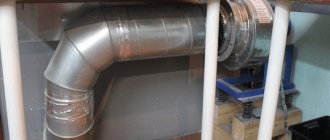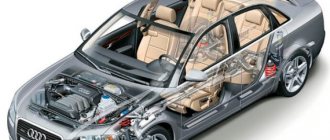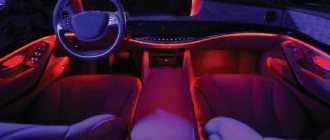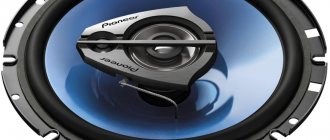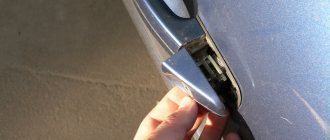How to “light” a car correctly? This question can arise at any time, but it becomes especially relevant during the cold season. Indeed, at low temperatures, even new batteries discharge much faster. There are a number of nuances that you need to know before “lighting” a battery from another battery. In particular, technical equipment, procedures, precautions. We will tell you about all this and more in detail.
First of all, you need to decide on the situation when it makes sense to “light up.” The procedure is performed only if the battery is discharged (completely or partially). In this case, the starter rotates at insufficient speed or does not rotate at all. If the starter works normally, but the car does not start, then you need to look for the cause of the malfunction elsewhere.
Hard to start when cold
The main reasons why the engine of a diesel, injection or carburetor car is difficult to start when cold. We eliminate the problem of difficult starting of a cold engine in the morning Read more
Why did the battery die?
Before telling you how to “light” a battery from another car, it’s worth explaining why it discharges quickly.
Among the reasons:
- deposition of lead sulfate on the plates, which reduces the battery capacity (due to frequent discharge “to zero”, poor quality electrolyte, high current charging);
- short circuit of plates having different polarities (among the reasons: crooked plate lattice, build-up on the electrodes or sludge at the bottom of the battery);
- shedding of the active mass from the plate;
- problems with the electrolyte (decrease in level due to water consumption, density not meeting the norm).
It turns out that the most common cause of battery problems is exhausted battery life. The easiest way to check this is with a special device - the so-called load fork, which simulates engine starting. In a “resting state,” the voltage on a working battery should be at least 12.7 volts, which corresponds to 100% charge. After 5 seconds under load, this value should not fall below 10.2 volts. If in a calm state the battery gives the norm, but after loading the test can no longer be passed, get ready to buy a new battery, otherwise you will soon have to ask to “light” the car.
Advice on extending battery life or how to eliminate the need to light a cigarette
It is important to understand that if the car needs lighting, then you must purchase a new battery if the procedure is successful. To extend its life, you need to know the following:
- Eliminate the possibility of frequently starting the engine with low mileage.
- You cannot leave the battery discharged for a long time, as this will lead to its complete unusability. If the battery is discharged, you should immediately replenish its charge from a generator or charger.
- Monitor the serviceability of the generator, as insufficient current production leads to a slow decrease in battery life.
- Starting the engine in winter must be completed with sufficient mileage to restore the charge. Try to drive more kilometers in winter, thereby giving you the opportunity to replenish your charge.
- To make engine starting easier in winter, it is recommended to use preheaters.
- Monitor the age of the battery, and it is better to replace products that are more than 5 years old immediately, without waiting for cold weather.
And based on the methods described above, it will not be difficult to light the car not only correctly, but also safely.
Jump wires
Special attention should be paid to the starting wires themselves. To learn how to choose them correctly, read the link. If they are too thin, then it is better to connect the car with a dead battery and wait 10 minutes without turning off the engine of the donor car. Then remove the wires and start the problem car. If you do not wait at least 10 minutes, the wires may simply burn out, and the startup will not happen.
Properties of high-quality wires for “lighting up” a car
To transfer energy from one machine to another you need high-quality starting wires:
- length not less than 3 m;
- the core is made of copper, and the wire cross-section is at least 16 mm, to protect the car’s electrics from power surges;
- rubber braided wire, the cable itself sits firmly in the “crocodile” handles;
- powerful springs of the handles for strong fixation;
- a “graspy” clamp that guarantees good contact with the terminal and a reliable connection of the two batteries.
How to choose cigarette lighter wires
An indispensable condition for successful lighting without consequences for the batteries and on-board networks of cars is the use of special wires.
These wires are sold in stores - they usually have red and black . This is done so that when connecting the terminals the polarity is not reversed. Black is always a minus, and red is always a plus. The convenient length of the product is 3–5 meters.
When the engine starts, the starting current supplied by the battery is high, so the wires must be rated for a current of 200 A. 16 mm2 cope well with such currents (you can take more).
Buy wires with PVC insulation - it will not tan or crack in the cold. When purchasing, pay attention to alligator clips - they should be made of copper , with sharp teeth and a powerful spring. Take cigarette lighters that provide high-quality contact with crocodiles ( crimping, soldering ).
You shouldn’t skimp on buying wires – high-quality products provide results and do not cause any hassle.
Scheme for lighting from another car
that a car must have a working and fully charged battery. However, not everyone, especially beginners, follows this rule.
Hence the need to light the car early in the morning in the cold, when the starter strains to pull the overrunning clutch and cannot even engage the flywheel crown. Such troubles can happen even with a new battery. Therefore, motorists should know how to properly start a car from another battery in the donor car.
Lighting diagram for a passenger car
If we are talking about passenger cars, then connecting a charged battery to a car with a dead battery is done in the following sequence:
- connect the positive terminals of the batteries with a wire ( red );
- connect the black wire to the negative terminal of the donor machine;
- the second end of the black wire is connected to the ground of the recipient's car.
batteries should be approximately the same in ampere meter.
Lighting diagram for trucks
On trucks, the on-board network is designed to be powered by 24 V , so two 12 Volt batteries , connected in series. Lighting for trucks follows the same pattern as for cars.
It is important that the battery that will start the car with a dead battery is fully charged.
Correct connection sequence
Particular attention should be paid to the sequence of connecting the starting wires. If everything is simple with connecting the positive wires, then the negative wires must be connected correctly.
You cannot connect two negative terminals to each other, this is due to the following reasons:
- if a discharged battery is faulty (short-circuited), current will flow to it with little resistance, this will give time to assess the situation and turn off the donor;
- During startup, large currents arise and flammable gas is released from the battery. Since there will be no source of sparks nearby, the likelihood of it igniting is minimized;
- The positive terminals are connected first, so that if touched carelessly, the possibility of a short circuit is eliminated.
When connecting wires, you must be very careful and do everything correctly. Mistakes can lead to failure of fuses or electrical devices, and sometimes to a car fire.
Do not connect two negative battery terminals to each other.
Video: sequence of connecting wires
Before starting the engine from another car: selecting a donor and preparing for the procedure
All fears and doubts regarding lighting a car with a dead battery appeared at the dawn of the era of the introduction of electronic “brains”. Loud condemnation of the old emergency method is associated with unsuccessful attempts to power injection cars, when all the electronics burned out completely. This happened due to ignorance of the smoking technique.
It is quite clear that there is no fire without smoke - you need a donor, a bunch of conductors and solid knowledge of how to properly light a car battery from another car. It all starts with measuring the potential difference across a supposedly discharged battery. We provided all the current figures in the material, the normal battery voltage without load and with it.
If major discrepancies are identified, it is time to vote with a bunch of wires. It should be noted that at this seemingly simple stage, no one canceled logic. The wires and car of the owner who agrees to help (donor) must meet certain requirements:
- The potential of the donor battery should be similar or greater than that of the battery of the problem car (recipient).
- The wire cross-section is at least 16 square millimeters. This is for small cars. As engine displacement increases, the cross-sectional quadrature should increase.
- The starter wiring crocs securely cling to the terminals of both batteries.
- The on-board voltage of both cars corresponds to the same rating. For passenger cars it is 12 V, for trucks it is 24 V.
We do not recommend disregarding the listed comments.
If you decide to power a battery with a capacity of 100 A*h from a neighboring car with a 60-amp power source, then the neighbor will stay smoking with you: the batteries will be discharged for both of them. Thin wires will not withstand high amperage, the peak value of which is observed when the starter is operating at the recipient. The conductor will heat up and the output voltage will drop. Unreliable crocodiles question the safe outcome of the gesture of mutual assistance, since a spontaneously flying “plus” will most likely short-circuit to “ground.” Approximately the same outcome when a heavy truck comes to the aid of a passenger car: due to overvoltage in the 12-24 V connection, all the electronics “fly”. However, if there is a shortage of assistants, you can also add a large-tonnage vehicle for a separate request: ask for temporary rental of one of two series-connected 12 V batteries.
Number of attempts
Lighting a car from the battery of another car has quantitative limitations. You cannot endlessly load a donor battery without the risk of deep discharge, even if it is a high-quality Austrian Banner car battery or a powerful “American” Exide. The optimal number of unsuccessful launches is 2-3 (the maximum permissible is 4-5).
When the limit is reached, you should:
- turn off the ignition of the problem vehicle;
- Without disconnecting the wires, start the donor car engine for 15-30 minutes (2000-3000 rpm) to recharge the battery from the generator;
- try again to start the engine of the recipient machine.
- If the result is unsuccessful again, there may be an additional malfunction or a mismatch in the electrical parameters of the battery.
- Which battery can you use to light a car?
It is necessary to follow two simple rules for choosing a donor car for parallel connection to a dead battery. The first condition concerns the same operating voltage and is always feasible, since most batteries for passenger cars and commercial vehicles have a 6-cell design that generates 12V. Exceptions are associated with motorcycles (6V) and heavy trucks, buses, and special equipment (24V).
The second requirement is more significant and often becomes a problem in emergency situations on the highway or in sparsely populated areas. It is unacceptable for the battery capacity of the car being lit to be greater than that of the donor. In such a situation, there is a high probability of rapid discharge of a working battery without achieving sufficient starting currents at the recipient starter.
How to light a car correctly: step-by-step instructions
The following algorithm of actions will help you figure out how to properly light a car:
- Park cars opposite each other at a minimum distance. The distance should be such that the cars do not touch the hoods, and the wires should be long enough for connection. As a rule, a cable of up to 5 meters is used (the most common wires are 2.5 meters long)
- Turn off the engines of both cars and turn off all electrical appliances.
- Open the hoods and find the battery poles.
- Securely connect the positive poles of the batteries with the red wire.
- Secure one negative terminal to the donor machine.
- Connect the second negative terminal to any metal part of the recipient car that is not covered with paint. It is advisable to place the mounting location as far as possible from the positive pole of the battery. This procedure will allow the charged battery to start the engine.
- After installing the four terminals, turn on the starter of the faulty car.
- If the car does not start, then you need to start the car engine with a working battery and do not turn it off for 15 minutes.
- After the specified time, turn off the donor engine and start the recipient starter. If the car still does not start, try again.
- To avoid short circuits and damage to the on-board electrical networks, you need to remove the wires in this order: disconnect the terminals with the “-” sign (first from the faulty car, and then from the donor car), then the positive ones.
If the engine starts, you need to let it run for at least 20 minutes, or better yet, drive the car. During this time, the generator will begin to generate energy and charge the battery. After two unsuccessful attempts to start the car, you should not repeat the procedure. The battery has probably become completely unusable or there is another reason for the breakdown.
If the car engine does not start the second time, you need to stop the process and follow these steps:
- Turn off the donor car and leave the wiring diagram unchanged;
- Start the car with a working battery and let it run for ten minutes at 2000-3000 rpm. During this time, the recipient's battery will be slightly recharged and will be able to generate enough energy to start the starter;
- Turn off the engine, turn off all equipment in the donor car and try to turn on the ignition of the car with a dead battery.
Video: Instructions on how to light a car
When to use the "lighting" method
Before you start looking for a person with a car who is ready to help, you need to be sure that the problem with your car is a dead battery. There are several main signs of this, they will help make sure that the problem is a dead battery:
- when the ignition is turned on, the indicators on the dashboard light up faintly or do not light up at all;
- when you turn the ignition key, the indicator on the dashboard disappears;
- When I try to start the car I hear a crackling noise under the hood.
Many modern cars have an on-board computer, the display of which displays all information about the state of the car and its systems, including battery voltage. If you don’t have a computer, you can purchase and install an electronic voltmeter; it will be a good assistant when using and maintaining your car.
You can also measure the battery voltage using a multimeter. If the readings are below 11.9 V with the ignition on, it will not be possible to start, especially in winter. The need to charge the battery can be indicated by a yellow indicator light on the instrument panel.
If you were unable to start the engine due to the battery being discharged at home, then you can connect a charger to its terminals and start the engine or slightly recharge the battery. And it’s a completely different matter if you are outside the city or you don’t have a charger, but you urgently need to go somewhere. In this case, you can turn to your friends or call a friend who can help you light up your car.
Important! If the car is in the garage and you are going to start it using the “lighting” method, then before starting this, you should push the recipient outside and drive it as close as possible to the donor. It is unsafe to light a cigarette indoors; gasoline vapors can ignite even from a small spark.
You can use the “lighting up” method in any case when there is an urgent need to start a car with a completely dead battery. Using the “push” starting method is undesirable, especially for injection engines. In addition, there is not always room for a push and the required number of people ready to help. Therefore, every motorist should have a set of necessary tools for “lighting up” and know the required minimum in this matter.
Is it possible to light a cigarette while the car is running?
For modern car donors, this practice is fraught with serious technical problems, since, in addition to the battery, a generator and an electronic control unit are involved in the switching processes. Sudden voltage drops when starting the auto-recipient create an excessive load on controllers and electrical systems, causing instant breakdowns or reducing equipment life. Many people recommend disconnecting the negative terminal of the donor car when lighting a cigarette in order to isolate the electrical circuits from the influence of the recipient car.
Common mistakes when lighting a cigarette
Starting the engine from another battery is a very risky endeavor. To avoid problems, you must follow the following rules:
- do not allow one wire to be connected to terminals of different polarities on two batteries;
- avoid contact between the clamps on the black and red cable;
- never light a broken car with obvious signs of faulty wiring;
- start the donor engine while the engine of the second car is running, if their batteries are connected by wires;
- If possible, avoid lighting at low temperatures.
It must be remembered that as a result of lighting the donor battery, the donor battery will be partially or completely discharged. For this reason, if it is not charged enough, then after helping the second car it will no longer be possible to start. The risk of this increases many times at low temperatures outside.
Let's agree on terms right away
Before starting explanations, it is necessary to determine the correct understanding of the terms. So:
- The donor car or donor battery is the one from which a charge will be supplied to the dead battery;
- Recipient car or recipient battery - one that is discharged and needs help;
- Red and black wire - this is how the wires in a cigarette lighter kit are usually marked. To avoid any discrepancies, the red wire is used to connect the “positive” terminals of the battery. Traditionally they are marked in red, so it will be easier to remember.
Beginners may have difficulty identifying “+” and “-” on a battery. In order to avoid confusion in any case, you need to know that the positive terminals are always thicker than the negative terminals. The black wire is connected only to the negative terminals; they can also be marked blue and they are always thinner than the positive terminals.
Who shouldn't be smoked
Try to avoid cars with old batteries. An over-aged battery is a complete headache: after 4-5 years of intensive use, there comes a time when it can short out or, even worse, explode. By helping such a battery, the donor can easily burn the electronics. What else is worth explaining to the person in need is the reasons why the car battery is discharged overnight, so that the next morning does not again turn into a “vote” for him.
Conclusion
Whether to help a neighbor who is in an unpleasant situation or not, everyone decides for himself. Sometimes you have to refuse if your own battery is “on its last legs” or the recipient car is clearly larger and more powerful. But if there is an opportunity to help, it is better to do so. And help out a person, and give yourself a “plus” in your karma.
Well, in order not to get lost in difficult situations, you can purchase a high-quality lighting kit in advance and carry it in the trunk. Then it will definitely be easier to persuade someone to help, or even to become a good wizard yourself.
Myths and horror stories
There are a wide variety of recommendations for lighting a car, not supported by logic or facts. And these myths are very tenacious. We are so constructed that we willingly believe them. It's time to get rid of stereotypes.
Myth 1. You can’t light a car in the cold. When else should you light it? In summer, such problems occur extremely rarely, which cannot be said about winter. Temperature does not affect the success of the task, the main thing is that the donor car is warmed up and its battery is fully charged.
Myth 2. You can’t light a fuel-injected car. Can! The type of fuel system does not affect the battery in any way. And there are fewer and fewer carburetor cars.
Myth 3. Lighting a cigarette can damage cars, in particular the ECU. If done correctly, it won't do any harm, it's just recharging the battery. But it’s better not to make mistakes!
Is it harmful to “light” a car?
Having received a request for help to start the engine of another car, the question involuntarily arises: is it harmful to “light up”, to use your car as a donor. If your new battery is fully charged, the car is running, and you have some free time, it is unethical to refuse help. The batteries must be of similar capacity and voltage, the donor machine must be of the same or higher class.
“Lighting” another car from your car is harmful and dangerous if the operation is carried out like this:
- while “lighting” the car, the donor stands with the engine running;
- during the “lighting” process, the ignition on the car acceptor is turned on and electrical appliances are turned on;
- the donor is a smaller capacity battery;
- the sequence of operations when assembling and removing connecting wires is broken;
- small cross-section wires with poor-quality insulation, faulty contacts or “crocodiles” are used;
- safety measures are not followed.
If the operations are performed correctly, there will be no harm to the battery and on-board network of the other car. You cannot “light” an old battery. You should refuse the donor's service if his battery is leaking or there is an acidic smell.
Starter chargers and boosters
Now you can not only conveniently buy a car battery with delivery, but also easily select the optimal ROM for its regular maintenance. The universal device is used to correctly restore battery capacity from a 220V network. It is capable of starting the engine both with preliminary partial recharging and instantly during a deep discharge. An important feature of starting-chargers is high starting currents of 400-700 amperes or more.
Standing apart are compact starting devices - boosters (jump starters), which are completely autonomous and act as an effective alternative to lighting a cigarette from another car. They are equipped as standard with crocodiles and high-capacity lithium-polymer batteries. One charge is enough for 4-5 successful starts with a power of 150-1000 amperes. Foreign batteries work well with boosters, for example, Hankook car batteries (manufactured by AtlasBX Co. Ltd South Korea), and domestic brands “Zver”, “Akom”, “Titan-Standard”, “Sibir”.
More questions
Is it possible to light a cigarette from a fuel-injected car?
Yes, you can, the main thing before lighting a cigarette is to turn off the engine of the fuel-injected donor car so as not to burn out the electrical equipment.
Is it possible that when lighting the car, the donor car's battery will run out?
Yes, it can, especially if the donor car's battery is old or already discharged. Therefore, before you let someone light a cigarette (a neighbor in a parking lot, parking lot, in the yard, etc.), first start your car, warm it up, and then let’s light a cigarette for another car. If your battery is in good condition, then you don’t need to be afraid that another car will instantly drain it, but don’t allow your battery to run for half a day.
Is it possible to light a Jeep from a small car?
It might work, but most likely not. Because the battery capacity of a small car is not enough or it is enough to crank the starter once. It must be borne in mind that depending on the power and dimensions of the vehicles, battery capacities vary. For example, a Jeep Cherokee with a 3.0 engine is equipped with a standard 90 Ah battery. And the Matiz with a 0.8 liter engine has a weak battery with a capacity of 35 Ah. The more powerful the car, the higher the current when the starter is cranked. Therefore, it is better to light cars with approximately equal power and dimensions, or it is better to light a Matiz from a jeep, but not vice versa.



